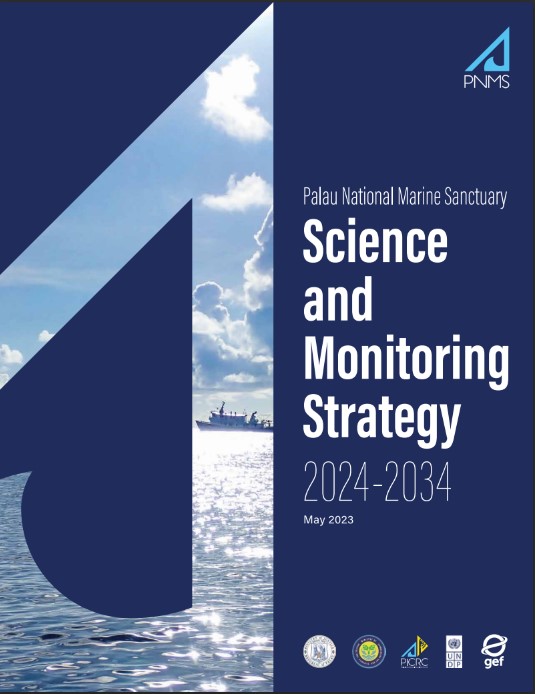- Research
PICRC releases PNMS Science and Monitoring Strategy
Continuing with their commitment to the mandate entrusted to them through the Palau National Marine Sanctuary (PNMS) legal framework, the Palau International Coral Reef Center (PICRC) has released the Science and Monitoring Strategy 2024-2034 for the PNMS. This document outlines the next ten years of research priorities in the area, and will guide the pursuit of science at the national level, which is arguably unprecedented in the field of Large-Scale Marine Protected Areas (LSMPAs).
This strategy was formed after significant discussions with both local experts, including those from the government, NGOs, and fishermen, and international experts from Stanford University, NOAA, the National Marine Sanctuary of American Samoa, Scripps Institute of Oceanography, and many other institutions.
“The strategy is unique in that we engaged extensively with the broader research and management community from across the world. This planning effort included discussions with highly respected and renowned institutions and experts in LSMPAs,” stated King Sam, PNMS Program Manager. “After 10 years, we will have developed a science and monitoring program for the PNMS, like the one we already have for coastal areas. We’ll be doing the type of research needed to answer the important questions for Palauans, and for the world.”
Formed around five overarching research questions, the strategy highlights the importance of understanding the species, habitats, and unique features in the PNMS, determining the role the PNMS will play for both climate change adaptation and future food security, and assessing the social, cultural, economic, and political implications of the PNMS. It also acknowledges that the PNMS can serve as a case study for what the long-term ecological monitoring of a pelagic large-scale MPA looks like.

“Science plays a critical role in decision making in our increasingly complex pursuit of sustainable ocean management,” stated Steven Victor, Minister of Agriculture, Fisheries, and the Environment. “This strategy demonstrates Palau’s commitment to deploying the best available science to address our collective ocean challenges within the PNMS and beyond.”
Important work lies ahead in securing the resources, partnerships and opportunities needed to implement this strategy, which will involve working with government agencies, funding bodies, scientists, and community stakeholders.


